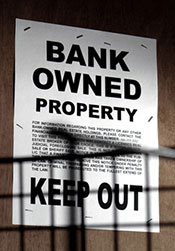Aligning the Chain of Commitment and Incentives to the Value Creation Flow - a Societal Example
 The so-called sub-prime crisis of 2008 was the end result of a self-destructing chain of counterproductive inducements and a commitment to get rich quick, at any cost to others.
The so-called sub-prime crisis of 2008 was the end result of a self-destructing chain of counterproductive inducements and a commitment to get rich quick, at any cost to others.
The mortgage lender would try to find anyone willing to buy a ridiculously big house, with a ridiculously low down payment, a very low interest rate, and low payments that the borrower could afford . . . for a while. The narrative would go more or less as follows: “What have you got to lose? You move into this beautiful new house with your family. Don’t you think you owe it to them? Don’t you think they deserve it? Within 12 months, the house will have gone up at least 10% in value—and I am being very conservative right now, just to be on the safe side. And it will keep going up. There is such demand out there. No way is this ending soon. You can then borrow on the value of the house, sell it to cash in, whatever.”
As unconscionable, unethical, and unsustainable as the loan was, the lender would then proceed with the loan, the credit department would approve it, and disbursement would proceed without a hitch. The bank would then sell the loan to an institution (such as Fannie Mae or Freddie Mac) who would buy a huge portfolio, pool the mortgages, and “securitize it,” that is, create a derived financial product (derivative) that would be sold in unit shares, mostly to institutional investors. At that point, institutions have lots of margin for creativity, with vehicles with arcane names such as collateralized debt obligation (CDO), credit default swap (CDS), and structured investment vehicle (SIV). A rating agency would assess the quality of the investment and set a rating to inform investors on the riskiness of the investment so that they can decide if the yield is appropriate. In this case, the rating agency somehow gave it its highest rating, and government oversight agencies trusted that all was well.
All was not well, of course. The chain of commitment that should have existed and that investors trusted existed—between the original investment decision and the data they were getting at the time of making their investment decision—was in fact an illusion. A system that was sound 10 years ago had slowly drifted, with no immediate visible consequence. “Process controls,” as we will call them later in the book, that should have raised a red flag apparently found it more convenient not to. The consequences were hidden in a bubble that, pretty much like an aneurism, slowly got bigger and bigger with no noticeable effect until it eventually ruptured. The changes were subtle, exploiting a wave of government deregulation applauded almost unanimously: bureaucracy decreased, entrepreneurship flourished, value was apparently being created as the economy and the stock market grew. It was all seen as a tribute to the prescience and vision of free-marketers.
The drift occurred through a series of little-noticed pairwise mutual adjustments between players, followed by upstream and downstream ripple effects, pretty much as a local power fluctuation in an electrical network will trigger waves of adjustments to bring back equilibrium. The beauty of these changes is that they all improved or at least maintained the benefit accruing to each local player in the system, that is, always preserving a locally win–win change. The insidious aspect of it, of course, is that they were all achieved at the expense of institutional investors—and ultimately individual depositors whose money they were investing—who were unaware of it and actually happy to get what seemed to be very good value. Nobody was in charge of the process. There was no “process owner.” The public that was bilked is still looking for the parties responsible for the mess, and legislators are still looking for the fix. Irrespective of convenient, cozy, mutually satisfactory local arrangements, ignorance, indifference, or denial of the fact that processes have been corrupted can only go on for a while. Eventually, it all comes back to bite you with a vengeance.
This macro process failure finds its equivalent within organizations. An illogical, unsustainable process can sometimes exist and prosper for years with everyone apparently happy with it, and an invisible, asymptomatic bubble building up somewhere. It could be growing customer dissatisfaction that has not yet translated into loss of market share, hidden design or execution defects that have not yet been dealt with, such as Toyota’s failure to recognize the importance of the sudden acceleration problem on some models, inaccurate asset valuation, unqualified employees being hired, or incompetent management being promoted. Only rigorous process analysis and control can reveal such misalignments and dysfunctions in processes and allow corrective mechanisms to be put in place before the bubble bursts. For when it does, it is often with dramatic and potentially fatal consequences.